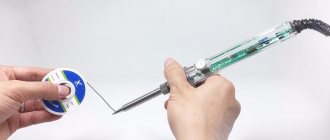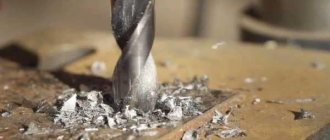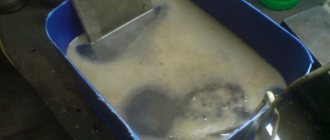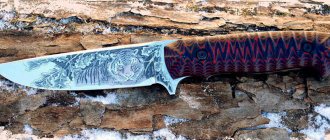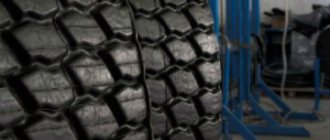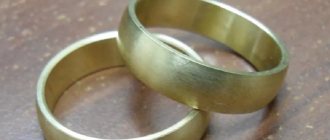As general information, it is worth saying that metal cutting is one of the types of metalworking. Other types of mechanical processing of metals include forging, bending, stamping, grinding, drilling, threading, etc., as well as chemical and thermal (thermal) methods. In other words, everything that allows us to obtain a product with the properties we need from a certain metal is metalworking.
The variety of methods for working with metals entails a variety of technical means. From files and chisels to CNC machines and industrial robots. You can get acquainted with the methods and machines themselves on the relevant websites; an example is the website of the Akron-System company, which is also interesting because it supplies not only equipment and components of different brands, but also offers the production of unique metal products according to our drawings.
In private house building and renovation, metal cutting is apparently the most popular type of work with metal products, along with drilling.
So, what do you need and can use if you need to cut a metal pipe, corner or rod, sheet or strip?
The tool and cutting method are selected depending on the thickness, type of metal, as well as the volume of work. The choice also depends on whether you have to cut metal without electricity or whether electricity is fine and, therefore, you can use a special tool.
Content:
- Variety of ways to cut metal
- Mechanical cutting of metal: how to cut iron, steel, copper
- Hand scissors
- Saws - this is what you can use to cut metal
- Angle grinders (angle grinders)
- Pipe cutters
- Wire cutters
- How to cut metal: a circular saw or a reciprocating saw
- Grinder and band saw
- Thermal methods
- Gas cutting
- Gas-electric technology
- Plasma technology
- Waterjet technology
- Guillotine
- How is injection cutting of thick metal performed?
- When arc cutting of thick metal is required
- Disadvantages of plasma technology
- Bend
- We break it down
- We use an electric jigsaw
- We use a multitool
- Professional ways
With the help of what tools and technologies is it easiest to separate a part from the whole workpiece? Let's consider how to cut metal, thin and thick, sheet and not, steel and iron. We will analyze the features of well-proven methods of influence so that you can be convinced that it is absolutely not necessary to use expensive equipment. Manual devices can also give the desired result and ensure the accuracy and precision of the operation, which in the future will make it possible to produce objects of the required shapes and sizes.
As a result, knowing all the options, you will be able to decide and choose the right one that is most suitable for your garage, cottage, backyard workshop, or even for production, if it is small-scale.
A circular saw
Sometimes a circular saw is used to cut metal. If you work with corrugated sheets, then the equipment must be turned on at low speeds. Otherwise, the polymer coating may be damaged. To work, you will need a partner to hold the sheet. Among the advantages of this tool is that the work is performed without heating, so you will not damage the protective coating on the profiled sheet. It is best to use an aluminum circle.
To set up fast work with a circular saw, you need to prepare a plywood pattern. The groove is not completely cut out in this sheet. This will be a kind of blank that allows you to preserve the galvanized or polymer coating on the sheet. An excellent tool for cutting metal is a double-blade saw. It, unlike the grinder, does not leave a torn edge and works much quieter. Unfortunately, not every master has such a tool.
Variety of ways to cut metal
They are divided into two fundamentally different groups:
- Cold - separation is carried out due to the mechanical impact of a tool on the workpiece, the hardness of which is higher than that of the part.
- Hot - the process involves using a thermal effect: a gas (liquid or other substance) heated to a high temperature melts the material at the contact points.
The choice of a specific method depends on a number of specific factors:
- the structure and density of the surface being processed (for aluminum it is one, for an alloy based on it it is different);
- volume and efficiency of the work carried out;
- the dimensions to be achieved and the complexity of the final form;
- LxWxH of the resulting part;
- the budget you have.
Electric metal shears
An excellent metal cutting effect is achieved using electric scissors. There are more than 10 varieties of this tool, but they are united by the ability to cope with almost any material, as well as the ability to carry out shape cutting. Electric metal shears can be considered a specialized tool for these purposes.
Thus, there are a lot of devices that can cope with the task in question. Which device to choose depends on the frequency with which you have to cut metal, the thickness of the material and your budget.
Mechanical cutting of metal: how to cut iron, steel, copper
All cold methods are based on physical impact, without heating the contact point between the tool and the part.
This requires some effort from the performer, but any method turns out to be relatively economical to implement, provides fairly high accuracy and precision of the result, and allows you to achieve smooth edges. True, you can only separate a part from the whole workpiece in a straight line, this is a minus. So, what devices are usually used in this case?
Hand scissors
They differ from spline ones by the absence of an electric motor, and from guillotine ones by their operating principle. In fact, this is the simplest and most affordable option - the classic answer to the question of what is the best way to cut thin metal at home. Because they are always on sale, and at modest prices, it is not difficult to purchase them for any workshop.
With their help, it is quite easy to separate strips, working along the intended line, but for this their edges must be very sharply sharpened.
The following types are distinguished:
- finger;
- power;
- chairs;
- lever;
- curvilinear.
They differ from each other in the design and vector of the applied load.
In addition to manual ones, there are also the already mentioned splined ones, suitable for work in limited space, and guillotine ones, which impress with their “clean” result - there are almost no defects.
Saws - this is what you can use to cut metal
The obvious choice is a hacksaw.
With its help, you will, with physical effort, separate one part of the profile from another or create some kind of shaped element. It is more convenient if the one you choose has a sliding frame, this will allow you to place and use canvases of different lengths. It is important that the latter be hardened and have a hardness of 60–63 HRC, and also have a sufficient number of teeth of a suitable size – 16–18 per inch.
Angle grinders (angle grinders)
In other words, the well-known grinders equipped with a disc. They offer impressive performance and leave very little dross behind. Yes, their primary task is to clean surfaces from uneven surfaces, but they are also a very versatile tool: they can be used to cut metal quickly and easily, cutting out squares and strips from sheet blanks, creating reinforcement and shaped elements. After which any of these items can be sanded to a shine.
The most important advantage is that to perform various technological operations you only need to change consumables, which, in essence, are disks, with teeth or abrasive, of varying degrees of roughness. Yes, they are all washable, but buying new ones is not a problem. And you already have the machine itself, and it will last for many years, especially with careful care - a great option for a garage or personal workshop.
Pipe cutters
Here's what to cut metal and rolled products with a diameter of 0.25 to 4 inches. They provide higher productivity due to a design of 3 rollers: the first two are fixedly mounted on the device body, the third provides screw clamping. As a result, the separation of part of the part occurs in a matter of moments, without unnecessary effort on the part of the performer and perfectly smoothly.
Wire cutters
They are convenient when working with rods, rods, wires, even wires. Their edges can be end or side, and the nature of the separation depends on this. For “difficult cases”, such as reinforcement of considerable thickness or, conversely, small-sized fasteners, there are bolt cutters. Due to the double-lever design, they allow you to create a serious load on the workpiece without exerting enormous physical effort.
bend
Ordinary wire and thin sheet metal can be bent several times in one place - first in one direction, then in the opposite direction. Cracks will appear at this place, it will become easier to move, and then a break and separation will occur. But he will be very rude.
Gas-electric technology
An electric arc is lit in the machine, as during a quarrel, which is aimed at a certain area. Nearby there is a tube (nozzle) that supplies a stream of oxygen to this place. The air accelerates to a very high speed and simply blows out the molten metal substance.
Hand scissors for cutting metal
They are great for use at home, and are also often used in small-scale production and when working with your hands, when you need to perform a single operation, for example, in a car service.
The peculiarity of use is that they can only be used when metalworking sheet steel with a thickness not exceeding three millimeters. They have their own varieties:
- for straight cuts - the most classic ones, they have slightly rounded blades to increase the force applied to one point, in appearance they resemble a standard stationery device;
- for curved ones - they are much more convenient for making artistic cuts, as well as making holes;
- fingers - have rounded edges;
- having only one moving part, the other half is fixed to the table.
Also, all products differ in right-handed and left-handed in sharpening. The convenience of turning during the process depends on this.
Their design feature is such that the handles are longer than the cutting part, this helps to increase the pressure force. The material from which they are made is also important - the hardness of the steel should NOT be lower than 52-60 HRC. The blades should NOT fit closely, but with a gap; if there is none, they will quickly fail, and if it is too large, the letter will wrinkle.
How to cut metal: a circular saw or a reciprocating saw
Tools from this category are divided into 2 subgroups:
- Reciprocating saws - act in the same way as jigsaws; their main element is a replaceable blade of 100–350 mm, which performs reciprocating movements during operation (it should be narrower, the smaller the radius of the workpiece). They are powered either from a centralized network or from a battery, and this is their plus and minus at the same time. They are portable, but you have to use electricity to use them, which is an additional expense. To cope with any of them requires skill and a good eye.
- Disc ones are easier to operate, and this is a powerful argument when you decide what is better for sawing metal. Their cutting elements are made of hard alloys, which means they are durable. Another advantage is the minimum amount of chips and the ability to make even narrow grooves. The wider the diameter of the circle, the greater the versatility. True, they are relatively expensive, have impressive dimensions and are heavy, this is a drawback.
Plasma Cutting Basics
Plasma is an ionized gas that conducts electricity. Plasma is created by adding energy to an electrically neutral gas. The energy is electricity and the gas is usually compressed air. Both elements are combined in a chamber between the electrode and the nozzle (the main consumables for plasma cutting), causing the gas to become unbalanced, creating plasma. Air pressure forces the plasma gas through the nozzle, creating a compressed flow that is electrically conductive. The more energy passed through the plasma cutter, the hotter the plasma arc becomes, resulting in greater cutting productivity and efficiency.
Plasma cutters are used to perform cutting and gouging operations, with the average manual system capable of cutting metal up to a maximum thickness of about 3 centimeters. Plasma usually requires a source of compressed air and electrical power. These are issues to consider when the job requires mobility, although the reduced size and weight of plasma machines—starting at 9kg—make them a more portable option. Additionally, power requirements are not an issue on many construction sites where welders and engine driven generators are commonly available.
The advantages of plasma cutters include:
- Capable of cutting many types of metals:
Plasma cutters can cut non-ferrous metals such as aluminum, stainless steel, and cast iron—materials that are becoming more common in many applications. - Cutting Precision:
Plasma typically produces fast cuts with minimal slag formation, producing a smooth cut with a tighter kerf than oxy-fuel torches. - No Preheating Required:
Plasma cutting does not require preheating the metal before cutting, saving time and money. - Faster speed on thinner workpieces:
Plasma can cut thinner workpieces faster than oxyfuel cutting and with little or no metal deformation. Plasma also provides better performance when cutting stacked material. - Better cutting of shaped metals:
When the workpiece has corners, channels or pipes, plasma cutting can provide faster and more accurate cutting. - Ease of Use:
Plasma systems are relatively easy to use compared to oxy-fuel systems and require minimal cleaning. - Safety Benefits:
Plasma systems do not require storing or handling explosive gases or working with open flames.
Grinder and band saw
The first is the most common model of angle grinder, and we, in fact, have already examined it.
Therefore, let's pay attention to the second one. This is equipment that allows you not only to position the workpiece correctly and safely, but also to move it in any desired direction. Precise positioning ensures a perfect edge during processing and minimizes material loss. Although it is not suitable for large-sized parts, it is the only negative.
Jigsaw
If you need to cut a circle in a sheet of metal, you should use a jigsaw. It works quite quickly, so you will get a neat hole in a matter of minutes. Among the disadvantages of the equipment are noise and the possibility of a burnt edge when processing profiled sheets.
Subtleties of working with a jigsaw:
- it is necessary to use saws with fine teeth;
- you need to choose a reciprocating mode;
- it is necessary to control the inclination of the cutting part;
- rapid failure of consumables.
Thermal methods
An oxygen flame heated to a very high temperature, a stream of electrically charged gas, or even a jet of plasma - this is what can be used to cut iron, steel or any other metal. There are several methods, each with its own characteristics, but they all have certain advantages:
- The thickness of the workpiece does not play a special role - the passage will be almost instantaneous.
- Any material can be used, even very hard ones, and alloys are no exception.
- The technologies are highly scalable – both for small-scale and large-scale production.
It is in this area that experiments and research are being carried out today. If mechanical methods are considered a classic of manual labor, then thermal methods are promising from the point of view of automating the processes of producing parts. Therefore, let’s take a closer look at their varieties.
Gas cutting
In this case, the flame is brought to a high temperature without the use of electricity. There are three options for a medium that acts as an instrument:
- Pure oxygen - separation is carried out due to the influence of its heated jet.
- With the addition of flux - a powder that immediately has a triple effect: chemical, abrasive and thermal. Essentially, it is a catalyst that speeds up the process and produces a cleaner weld.
- Using a “spear” - a special tube that burns when working gas is blown through it; This minimizes the amount of scale.
The advantage of the method is its relatively low cost. And this is also a simple answer to the question of how to cut thick metal, but the method also has a lot of disadvantages. Among its disadvantages:
- significant consumption of material;
- low degree of accuracy;
- the need for subsequent cleaning of the edges;
- deformation of contact surfaces;
- general slowness of the process.
It is not surprising that experts sought to find a more advanced solution. Let's look at the results of their research right now.
Gas-electric technology
Here, current is already used - it heats the jet, which melts the material and carries away waste particles with its flow. One of two media options is used:
- compressed air is what is used to cut thick metal in most cases; and it also blows out the residues from the melting zone, which is convenient;
- oxygen - enters gradually but steadily, forms a stable arc that separates part of the workpiece from the whole and at the same time removes oxides.
Most often, this method is used when it is necessary to eliminate defects after welding. True, when the electrodes burn, the surface is often excessively saturated with carbon and it is necessary to additionally remove it, otherwise it will negatively affect the subsequent service life of the part. Noticing this phenomenon, experts tried to find an even more perfect solution, and achieved success.
Plasma technology
Ionized gas is the tool used to cut metal today (if we are not talking about hand tools).
It is heated to the state of a liquid and viscous stream, with the help of which the material is melted. Thus, it is not difficult to make an object of any shape, even curly or complex, with high precision and quickly. The benefits are as follows:
- Processing is carried out quickly, which allows you to achieve good labor productivity.
- Universal application - suitable for both hard cast iron and soft aluminum.
- Excellent quality of the final seams - no stripping or sanding required.
- Environmental friendliness and overall safety of operations.
Yes, tools are used for manual cutting of metal, and plasma is only applicable in production. Yes, it has certain disadvantages, but in the workshop, with regular and, especially, large-scale production, their influence is minimized. It is no coincidence that it is considered the most promising.
There are other methods, less common, but also interesting and worthy of attention.
Waterjet technology
Water saturated with solid particles (usually fine sand) is supplied to the line of the intended edge under pressure and a thin stream. Due to targeted action, this liquid separates the required part from the whole workpiece.
It has been successfully used since the mid-60s - it shows how you can cut sheet and thick metal, which is even more important. Over the past half century, the method has been improved to the limit, although in terms of accuracy and speed of obtaining results it is still somewhat inferior to advanced hot methods.
Guillotine
The material is placed between two knives, one of which is fixed to the frame at a certain angle, and the second is movable: it falls on the first and, due to the impact, separates the desired strip, segment, section from the part. Accuracy of fixation is ensured by the clamping system, as well as the back stop. To prevent the blades from hitting each other (which can lead to dullness and premature wear), there is a gap between them, but it should not be more than 3 degrees, otherwise the final edge risks becoming cone-shaped or wrinkled.
Among other disadvantages it is worth noting:
- bends;
- twisting;
- saber-shaped
But if the sheet is 3–5 mm, these defects can be avoided.
How is injection cutting of thick metal performed?
It is carried out with a special burner, the power of which is selected based on the thickness of the material:
- at 5–100 mm it is small;
- at 8–200 – average;
- at 10–300 – high.
The mouthpiece is subjected to the greatest temperature loads, therefore, according to GOST 5191–79E, it must be made of bronze, be replaceable, multi-nozzle and of a suitable size (from zero to six); There are non-separable and composite varieties.
What determines the price of custom sheet metal cutting?
The cost of cutting sheet metal is determined by a combination of interrelated factors, such as:
- technology used;
- equipment power;
- brand, thickness of raw materials;
- quality of finished products;
- order quantity.
If during the work a large amount of raw materials will be used, the cost of the order can be reduced by reducing the value of the price of the accounting unit (kilogram, linear meter).
The cost of producing small batches is discussed with the customer individually in each specific case. The price of cutting sheet materials is not always calculated using the formula “unit cost multiplied by quantity”, since any order requires reconfiguration of working equipment.
Today, manufacturers use a variety of technologies for cutting sheet metal, but the main criteria for the customer are still the quality of work, production time, cost, and the availability of additional transportation services.
When is arc cutting of thick metal required?
In essence, it comes down to melting the desired area. Relevant in the case of crowbar and sprues. This method is suitable if:
- There are no strict requirements for the final quality; uneven edges are acceptable;
- in the future, before welding, mechanical processing will also be performed;
- other equipment is missing or its use is impractical.
Here it is important to choose the right electrodes and current strength - according to the dimensions of the part. For workpieces 5–50 mm in size, 300–400 A and rods with a diameter of 4–5 mm are enough. It is necessary that the filler rods are coated with oxides for gas formation and magnesium ore - this will improve the cleanliness of the weld.
Disadvantages of plasma technology
Speaking about how to quickly cut metal in production conditions, we immediately recall this method, but it is not without its drawbacks, and these are:
- Expensive and complex equipment that requires regular maintenance.
- Difficulties in processing large-sized workpieces.
- The angle of deviation of the flow from the perpendicular is limited.
- The machine makes a lot of noise during the process.
The main point is that you cannot buy such equipment for a garage, country house or personal workshop. It is not profitable to solve one-time problems with its help. It is applicable only in workshops where the production of similar parts is on stream. This means it makes sense to consider more classic manual methods.
Metal scissors
Metal scissors are also effective for cutting. Depending on the type and thickness of the material, the following types of tools are distinguished:
- ordinary hand scissors (used for sheet steel with a thickness of 0.4 - 1.1 mm);
- chair scissors (they have large dimensions and are suitable for steel up to 2.5 mm);
- power shears (for steel up to 5.0 mm);
- lever or swing shears (for long material with a thickness of up to 3.0 mm);
- guillotine (have inclined knives, suitable for thick steels up to 32 mm).
We use an electric jigsaw
Here is a good option on how to cut metal at home, with high accuracy and without serious physical effort. With the help of this device it will not be difficult to even cut out some kind of shape, not to mention separating a piece of pipe or corner. The only negative is that this is a relatively slow process, although with the same hacksaw you will spend longer and spend more effort. Well, some energy consumption is also implied, although the amount should not be serious.
What and how to make a hole in a sheet of metal?
It all depends on the size of the hole. If the diameter is small, a drill will do. If large holes are needed, special drill bits are used. Pay attention to the material from which the horse-drawn horse is made. To process profiled sheets, you should use nozzles with a carbide coating. Processing should be carried out without increasing the temperature.
A jigsaw is used to make a large diameter hole. With this tool, cutting out a circle of large diameter will not be difficult. When working, use a saw with fine teeth
Professional ways
This category includes processing on plasma torches, the use of lasers in galvanic installations, multifunctional machines and other specialized equipment.
The point is that you do not solve the problem yourself, but entrust it to a company for which this is a specialized service, and it makes the required number of parts within the specified time frame and is responsible for the quality, accuracy, and cleanliness of the seams. sells band saw machines, to clarify the information you are interested in, please contact our managers at the contact numbers listed on the page. They will answer all your questions. So, you have found out what tool is used when cutting metal at home, what is better to cut - gas or plasma technology and much more. We hope that now it will be easier for you to choose a method for processing workpieces.
Method 9. We cut metal with a multifunctional power tool (Renovator multitool, multicutter).
A new, widely advertised tool that comes with different attachments, including those used for cutting metal.
One of the promoted tool names is the Renovator multitool. True, other manufacturers (including Bosch, Dewalt, Makita, etc.) do not use this name. Due to its versatility, you should not expect serious capabilities for cutting large-sized metals from a renovator. Best used for trimming protruding nails, screws and other small metal cutting, especially in hard-to-reach places.
Waterjet method
Cutting products using the waterjet method has the following definition: cutting a material by exposing it to a mixture of sand and water supplied under pressure through a narrowly directed nozzle. Sand in combination with water can cut metal products with a thickness of 30 cm.
The method is one of the innovative ones. After cutting the part, there is no need for additional processing of its edges.
Waterjet cutting speed
This method does not apply to the hot method of cutting metal products, since there is no thermal effect on the workpiece. Thanks to this, cutting can be carried out without deforming the product.
The main disadvantage of the waterjet method is the inability to cut metals susceptible to corrosion. The equipment used is expensive and is not always available for private needs.
